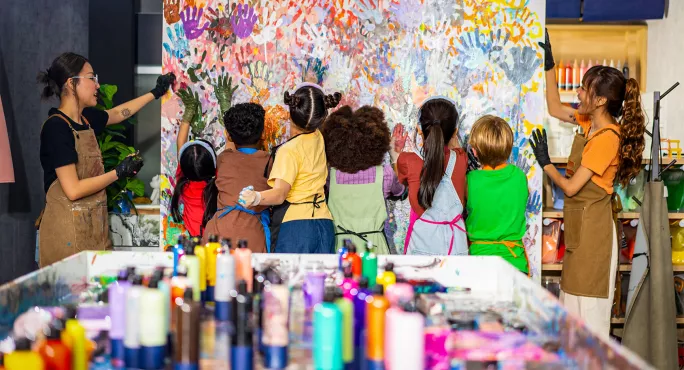Around 64 per cent of our schoolâs 300 children live in 1 and 2 areas, an official measure of poverty. We also have lots of bilingual children from families arriving either as refugees or asylum seekers, who are placed in short-term lets.
At the last count, we recorded 21 dialects, with Urdu as our most prevalent language. This creates a nice mix of children with different life experiences, which we try to draw on to support the curriculum. Also, many of our approaches to additional support needs (ASN) can help children who are new to English.
We have focused on craft skills, working with , a teacher-development project designed to embed craft approaches in six Dundee primary schools. It defines craft as art forms that are âboth contemporary and traditionalâ and part of âa creative industryâ. Examples are woodwork, ceramics, weaving and much more.
Building confidence and connections
Craft allows children to work together; through hands-on experience, they build confidence and make social connections.
It fosters inclusivity and communication skills, which is great for children who are non-verbal or bilingual. We find that craft encourages our children with ASN to use speech with increased creativity and confidence.
We also see how craft activities in the classroom have an impact on emotional wellbeing. Many of our children have trauma and deprivation backgrounds. Craft gives them pride and much-needed time out; itâs a way to switch off but, crucially, also builds self-esteem and helps children process emotions.
Craft also helps with creativity and skills needed for science, technology, engineering and maths, plus it helps sharpen problem solving, build resilience and develop fine motor skills, which is why it is a key part of our strategy and curriculum planning.
Teaching through craft feels truly transformational for us. We want to craft it to accentuate and complement all aspects of the school experience.
Wider achievement passport
We have a âwider achievement passportâ in the school, and include craft skills in this. So, for example, the Primary 5s must have experience of knitting, while another year group will learn how to sew a button. We understand that these are essential life skills.
Embedding craft like this also allows experienced pupils to share their skills with younger children. We begin with card or plastic needle-threading sets in Primary 1.
We also celebrate diversity through craft-based projects. For example, one pupilâs mum came into school during our expressive arts week to do Arabic painting and paper craft.
This encourages children to talk about their families and backgrounds, which is so important. We have a big dollsâ house and, in a âcountry studyâ last year, we designed each room to focus on a different country - there are Japanese and Scottish rooms, among others, which the children have used for stop-motion projects. We are also looking into the links between craft and coding and 3D-printing.
Our upper-school âMakerspaceâ - where P6 are the key custodians - includes three sewing machines. Our aim is for it to be as inclusive as possible and to benefit our children with ASN: activities are bilingual and include visual guides for a range of learners.
One P4 pupil who wasnât coping well with regulation was able to sit in the Makerspace and work on his craft project with other children around him - and he was helping them with their projects, too. Craft increased his confidence and social skills. We have seen how the collaborative element of craft builds ownership, autonomy, friendships and understanding of how to work together.
Learning craft skills has also allowed our teachers to connect with professional makers and bring them into their classrooms, hone their skills, be inspired, build resilience and confidence, take creative risks and be less afraid of getting it âwrongâ. Craft opens up the idea that everyone can be creative.
Jennifer Heffell is headteacher at Rosebank Primary School in Dundee
You can now get the UKâs most-trusted source of education news in a mobile app. Get Tes magazine on and on





